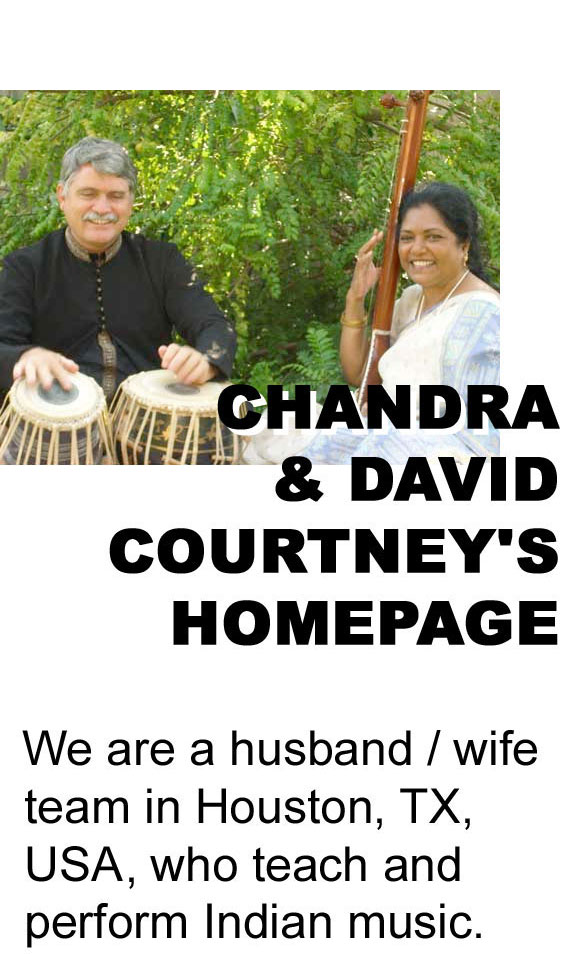The word "theka" literally means "support" (Pathak 1976). Originally the theka was nothing more than a "groove" that is laid down for the accompaniment of other musicians. However in the last few centuries it has emerged as "the" signature for any north Indian tal.
Theka is generally conceived of as a conventionally accepted arrangement of common bols. Such bols as Dhaa, Dhin, Taa, Naa, and Tin are the most common. The majority of common thekas may be played using only these bols.
p> p>A very common example is tintal
XDhaa Dhin Dhin Dhaa | 2Dhaa Dhin Dhin Dhaa | 0Dhaa Tin Tin Naa | 3Naa Dhin Dhin Dhaa |
The topic of the theka and its bols is complicated by the pakhawaj. There are many thekas which are derived from this instrument. These tend to use very different bols. It is very common to see phrases such as Dhaa Dhaa Din Taa, or Te Te Ka Ta Ga Di Ge Na. One very common theka from the pakhawaj is Chautal; it goes like this:
XDhaa Dhaa Din Taa | 2KiTa Dhaa Din Taa | 3TeTe KaTa | 4GaDi GeNa |
We may make a few observations about the structure of theka. There is a tendency for theka to be based upon two symmetrical structures. Let us look at jhaptal for example:
XDhin Naa | 2Dhin Dhin Naa | 0Tin Naa | 3Dhin Dhin Naa |
In this example the structure Dhin Naa Dhin Dhin Naa is opposed by Tin Naa Dhin Dhin Naa
This symmetry is also illustrated in dadra tal; it goes like this:
XDhaa Dhin Naa | 0Dhaa Tin Naa |
In this last example the phrase Dhaa Dhin Naa is reflected in the structure Dhaa Tin Naa.
It must be stressed that there are numerous thekas which do not exhibit this symmetrical quality. Therefore symmetry must be considered a tendency rather than a rule. Rupak is a very common theka which is asymmetrical; it goes like this:
0Tin Tin Naa | 1Dhin Naa | 2Dhin Naa |
There is another observation that we can make about the structure of the theka; there is a tendency for the bols to follow the structure of the vibhag. If we look back at the jhaptal in the earlier example we see that the 2,3,2,3, clapping arrangement of jhaptal is reflected in the bols Dhin Naa Dhin Dhin Naa Tin Naa Dhin Dhin Naa. Again, the numerous exceptions show that this is merely a tendency rather than a rule.
Closely allied with the concept of theka is the prakar. The term prakar indicates that there is not just one way to play the theka but there are numerous variations. Some of these variations are a technical necessity and others are artistic.
© 1998 - 2020 David and Chandrakantha Courtney
For comments, corrections, and suggestions, kindly contact David Courtney at [email protected]



